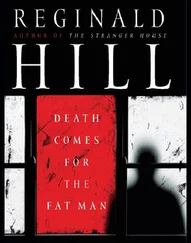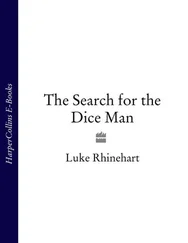The Ungermans informed him that the only thing missing was a gold and pearl pin but that perhaps Karin Ungerman had given that to her sister who lived in Florida, she wasn’t quite sure. The burglar had undoubtedly been in the apartment for only a very short while; only the top drawer of the dresser had been disturbed. Luckily, Mrs. Ungerman hid all her good jewelry in a galosh in the closet whenever she went on a trip. If you lived to be sixty-eight years old, and have been burglarized four times in the past seventeen years, you learn how to deal with the bastards. But bringing in a cat to pee all over your gold brocade chaise! Really!
“What did the man look like, can you tell me that?” Kling asked.
“He was a tall man,” Mrs. Ungerman said.
“How tall?”
“Taller than you,” she said.
“Six feet two inches, around there,” Mr. Ungerman said.
“How was he dressed?”
“In dark clothes. Black, I think.”
“Blue,” Mr. Ungerman said.
“Dark, anyway,” Mrs. Ungerman said. “Trousers, jacket, shirt, all dark.”
“What kind of shirt?”
“A turtleneck,” Mrs. Ungerman said.
“Was he a white man or a black man?”
“White. The part of his face we could see.”
“What do you mean?”
“We only saw his eyes and forehead. He was wearing a mask.”
“What kind of a mask?”
“A handkerchief. Over the bridge of his nose, hanging down over his face.”
“You say you saw his eyes...”
“Yes, and his forehead.”
“And his hair, too,” Mr. Ungerman said. “He wasn’t wearing a hat.”
“What color were his eyes?” Kling asked.
“Brown.”
“And his hair?”
“Black.”
“Was it straight, wavy, curly?”
“Curly.”
“Long or close-cropped?”
“Just average length,” Mrs. Ungerman said.
“Anything else you may have noticed about him?”
“Nothing. Except that he moved very fast.”
“I’d move fast, too,” Mrs. Ungerman said, “if I’d just let a cat make a mess all over somebody’s gold brocade chaise.”
That morning Detective Steve Carella went down to the Criminal Courts Building and, being duly sworn, deposed and said in writing:
1. I am a detective in the Police Department assigned to the 87th Detective Squad.
2. I have information based upon my personal knowledge and belief and facts disclosed to me by the Medical Examiner that a murder has been committed. Investigation discloses the following:
On April 19th, at 10:15 A.M., George Mossler, a vagrant, discovered the body of an unidentified man in Apartment 51 of an abandoned tenement building at 433 North Harrison Street. The victim had been stabbed in the chest and nailed to the wall, a spike through each extended palm and a third spike through his crossed feet. Medical Examiner states cause of death to be cardiac hemorrhage due to penetrating knife wound; and sets time of death as sometime during the night of April 18th.
A search of the building at 433 North Harrison Street resulted in the finding of a size twelve, left-footed, white tennis sneaker in Apartment 52 which is down the hall from Apartment 51 where the body was discovered.
On April 22nd, while showing pictures of the body of the dead man to people in the neighborhood where the body was found, investigator entered the shop of Sanford Elliot, located at 1211 King’s Circle, approximately four blocks from the North Harrison Street address. Sanford Elliot was on crutches and his left foot was bandaged. On his right foot was a white tennis sneaker believed to be the mate to the left-footed sneaker found at the murder scene. When questioned, Sanford Elliot stated that he had been in Boston on the night of April 18th and did not know or recognize the picture of the man found murdered at the North Harrison Street address.
Based upon the foregoing reliable information and upon my personal knowledge, there is probable cause to believe that aforementioned tennis sneaker constitutes evidence in the crime of murder and may be found in the possession of Sanford Elliot or at premises 1211 King’s Circle, ground floor rear.
Wherefore, I respectfully request that the court issue a warrant and order of seizure, in the form annexed authorizing the search of Sanford Elliot and of premises 1211 King’s Circle, ground floor rear, and directing that if such property or evidence or any part thereof be found that it be seized and brought before the court, together with such other and further relief that the court may deem proper.
No previous application in this matter has been made in this or any other court or to any other judge, justice, or magistrate.

Carella realized that the application was weak in that there was no way of connecting Elliot with the murder except through the sneaker, and sneakers were, after all, fairly common wearing apparel. He knew, too, that a warrant issued on his application might possibly be later controverted on a motion to suppress the evidence seized under it. He was somewhat surprised, but nonetheless grateful, when a supreme court judge signed and dated the application, and issued the requested warrant.
Which meant that Carella now had the legal right to arrest an inanimate object, so to speak.
If Carella was getting a little help from the courts, Kling was simultaneously getting a little help from the Identification Section. As a matter of routine, he had asked them to run checks on both Fred Lipton and Nat Sulzbacher, the Calm’s Point real estate agents whose give-away pen had been found in Augusta Blair’s apartment. Much to his surprise, the I.S. had come back with a positive identification that immediately catapulted old Fred Lipton into the role of prime suspect in the burglary case. Kling had not yet eliminated Stanislaw Janik as a contender for best supporting player and possible supplier of kittens and keys, but the physical description given by Mrs. Ungerman ruled him out as the man actually entering the apartments. The burglar was tall, with black curly hair and brown eyes. Janik was short, almost totally bald, and his blue eyes were magnified by thick eyeglasses.
So Kling was pleased to learn that whereas Nat Sulzbacher had no criminal record (he could have obtained a license to sell real estate after having been convicted of a misdemeanor), his salesman, Frederick Horace Lipton, had been in trouble with the law on two previous occasions, having been arrested for Disorderly Conduct back in 1954 and for First-Degree Forgery in 1957. The disturbance in 1954 was only a misdemeanor, defined as any crime other than a felony, but it still might have netted Lipton as much as six months’ imprisonment in a county jail or workhouse. Instead, all he’d got was a $50 fine. The 1957 paper-hanging rap was a felony, of course, defined as a crime punishable by death or imprisonment in a state prison. Considering the offense, the court was equally charitable in sentencing Lipton this second time; he could have got twenty years, but he drew only ten.
He had served three and a half of those at Castleview State Prison, and had been released on parole in 1961. As far as society was concerned, he had paid his debt and was now a hard-working real estate salesman in Calm’s Point. But one of his employer’s give-away pens had been found at the scene of a burglary. Nat Sulzbacher did not have a criminal record; he was therefore an ordinary respectable everyday citizen. But Fred Lipton was an ex-con. So Kling naturally asked Lieutenant Byrnes for permission to begin surveillance of him as a suspect, and Byrnes naturally granted permission, and the tailing began that afternoon.
Читать дальше













